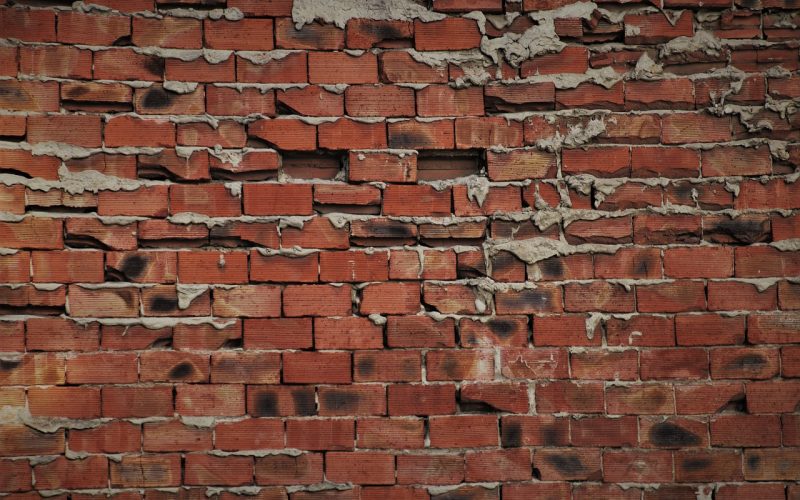You may be wondering, “Do walls have different types?” Well, yes, they do. Walls are structures that divide a building into sections.
They are divided into the inner and outer walls. People also refer to the interior walls as Partition walls, while they refer to the outer walls as exterior walls.
However, the classification differs from the types of walls. Below is the list of the different types of walls.
1. Non-Load Bearing Wall
The first on our list of different types of walls is a non-load-bearing wall. We can distinguish non-load-bearing walls by their rafters and joists.
They don’t support roof loads or floors above them so that they won’t support any of the structure’s weight.
Contractors use these walls as partitions or to separate rooms from the other compartments. We can also remove the non-load-bearing wall without impacting the building’s construction.
They can remove any non-load-bearing walls without jeopardizing the building’s structural integrity.
Furthermore, they are cheap and not responsible for the property’s gravitational support.
Types of Non-Load Bearing Walls
- Brick Wall
- Façade Bricks
- Brick Wall
- Hollow Concrete Block
2. Load Bearing Wall
A load-bearing wall is a building’s active structural element. It is one of the earliest construction methods.
It bears the loads on it by the beams and slabs above it and its weight and transfers them to the foundation.
Load-bearing walls can be used inside or outside the building and are frequently perpendicular to the floor joists.
Further, they build the load-bearing form of a wall on a strip foundation, which holds the weight of the elements above it by directing it to a foundation structure below it.
Types of Load Bearing Wall
- Masonry Wall
- Stone Wall
- Precast Concrete Wall
- Engineering Brick Wall
- Retaining Wall
3. Shear Wall
Among the different types of walls, the shear wall is a vertical component that withstands lateral forces in the system’s plane.
It makes a building more resistant to wind and earthquake loading. However, it usually consists of wood frame stud walls with a structural sheathing material like plywood.
Also, any shear wall involves two pressures: wind pressure and oil pressure or wind pressure and water pressure.
To counteract these forces, we use a shear wall.
Types of Shear Wall
- Steel Shear Wall
- Mid-Ply Shear Wall
- Concrete Block Shear Wall
- Plywood Shear Wall
- Reinforced Concrete Shear Wall
4. Veneered Wall
A veneered wall is a single non-structural external masonry wall composed of stone or brick. It has the appearance of solid masonry without the weight and cost of solid masonry.
This wall type has a backing attached, but it is not so tightly bound that it exerts a standard action under load. It also has an outside facing for insulation, adornment, or protection.
5. Cavity Wall
A cavity wall is another type among the different types of walls. There is a hollow center to this wall type, and it has two “skins” separated by open space.
The term “leaves of cavity wall” refers to the two independent walls that make up the cavity wall.
People refer to the internal leaf of the wall as the inner leaf and the external leaf as the outer leaf. The internal leaf helps prevent rainwater from penetrating the inside surface of the wall.
Further, people use mansory skins such as brick or cinder blocks on buildings.
6. Panel Wall
A panel wall has a single piece of material that is usually flat and rectangular. It is a non-load-bearing outside wall in a framed building usually built of wood.
It’s also ornamental, offering insulation and soundproofing while maintaining a consistent appearance and some degree of durability or replaceability.
Wall panels can save construction costs by giving the paneled surface a consistent appearance without paint or other finishing materials.
7. Compound Wall
A compound wall is a wall contractors build entirely around a building to denote the boundaries of a property.
People also refer to it as a boundary wall. As a result, two independent plots are separated. Also, the two neighbors may work together to construct it.
8. Precast Wall
The precast wall is among the different types of walls. They make it by pouring concrete into a reusable wall mold or form, which cures in a controlled environment before being carried to the construction site.
Then, they lift the place with cranes. Precast walls are primarily helpful in expediting the construction process, which is their primary function.
Also, this type of wall is preferable when there is less work area and a lower likelihood of labor.
Furthermore, the nicest feature about precast walls is that the firms that manufacture them will provide qualified staff to erect the walls on your property.
9. Retaining Wall
Retaining walls are solid walls that support soil laterally, allowing it to retain at various levels on the two sides of the wall on either side.
They are also responsible for maintaining the ground’s unequal level on both faces. A retaining wall holds the soil back.
If the soil slopes downward, it can cause erosion in the surrounding area. Lastly, retaining walls keep water from flowing into a building.
10. Core Wall
The core wall is the last on our list of different types of walls. It is a mixture of shear walls that contractors build from the base and lift to their height.
They also make the core wall from the foundation and then elevate it up to the building.
To avoid the torsion effect, the contactors order and arrange the wall like a core and position it at the geometric center of the building.








